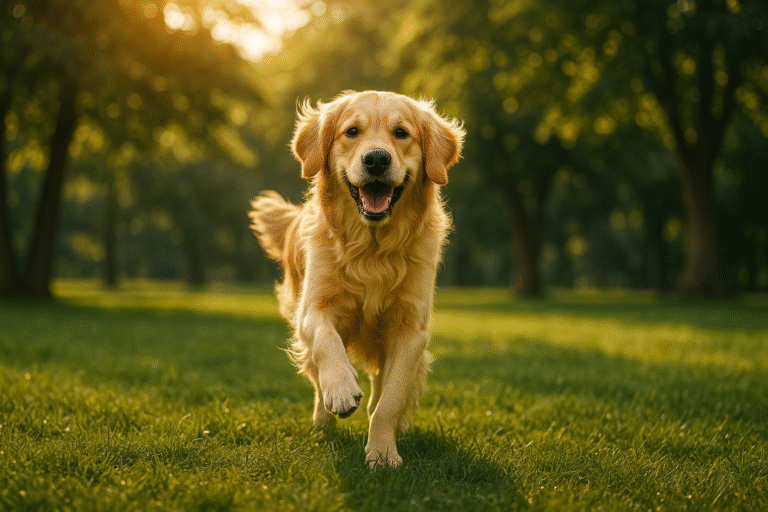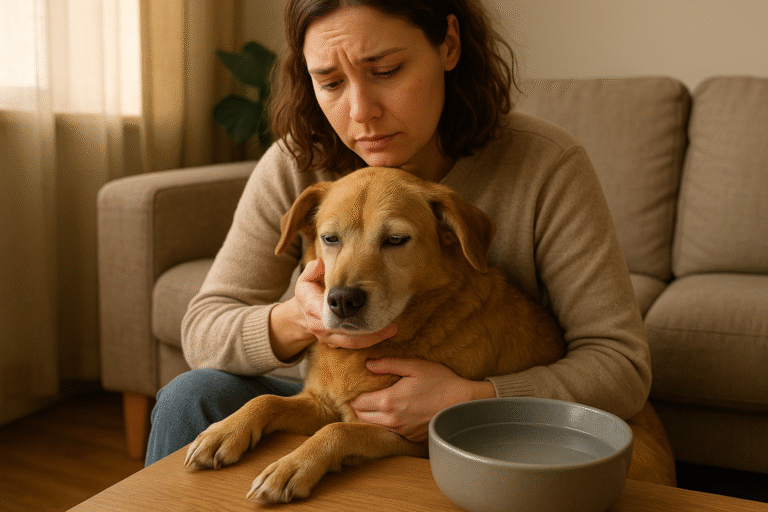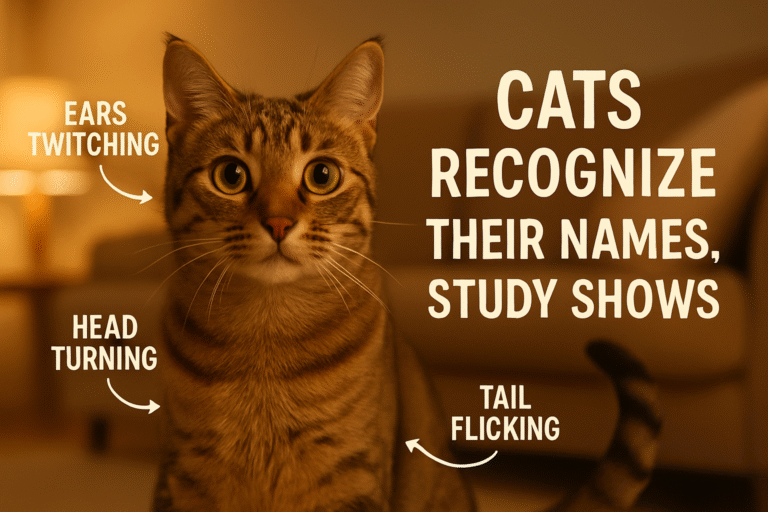Garlic and onion toxicity in dogs is among the most overlooked dangers. Learn how these dangerous foods for pets could seriously affect your dog’s health and how to prevent it.
Table of Contents
ToggleGarlic and Onions: Hidden Ingredients That Can Harm Your Pet
While garlic and onions are regularly used in everyday cooking, their hidden danger to pets, especially dogs, often goes unnoticed. These seemingly harmless ingredients can result in severe health consequences when consumed by dogs. Most pet owners are unaware that these are among the most dangerous foods for pets and can lead to fatal conditions if not addressed in time.
It is therefore important for dog owners to learn how garlic and onion toxicity in dogs works, how it can be prevented, and what immediate actions must be taken when exposure happens.
Key Facts: Garlic and Onion Toxicity in Dogs
| Key Fact | Description |
|---|---|
| Toxic Threshold | As little as 15-30 grams of onion per kg of body weight can cause toxic effects. |
| Garlic Potency | Garlic is 5 times more toxic than onions. |
| Forms of Exposure | Raw, cooked, powdered, dehydrated, and processed forms are all harmful. |
| Delayed Symptoms | Signs of toxicity may appear 1–3 days after ingestion. |
| Breed Sensitivity | Akitas and Shiba Inus are particularly vulnerable. |
| Symptoms | Include vomiting, weakness, pale gums, high heart rate, and reddish urine. |
| No Antidote | There is no specific antidote; treatment focuses on symptom management and supportive care. |
| Fatal Cases | Severe poisoning can lead to death if untreated. |
| Veterinary Urgency | Immediate medical attention is crucial for survival. |
| Human Foods to Avoid | Besides garlic and onions, chocolate, grapes, and xylitol are also dangerous. |
What Makes Garlic and Onions Toxic to Dogs?
Garlic and onions are part of the Allium family, which includes leeks, chives, and shallots. This plant group contains sulfur-based compounds known as thiosulfates and disulfides, which are responsible for the toxic effects on dogs.
When dogs ingest any food from the Allium family, these compounds interfere with their red blood cells. Over time, this interference can lead to oxidative damage, causing the red blood cells to rupture—a condition called hemolytic anemia.
Interestingly, garlic is estimated to be five times more toxic than onions for dogs, even though both ingredients are harmful in any form—raw, cooked, or powdered.
Forms in Which Garlic and Onions Can Harm Your Dog
It is important to realize that garlic and onion toxicity isn’t limited to raw forms. These ingredients are often present in:
- Dehydrated soups
- Baby foods
- Packaged gravies
- Processed meats like sausages or meatballs
- Leftovers or table scraps
Even trace amounts found in flavorings, seasonings, or broths can trigger toxic reactions, particularly in smaller dogs or more sensitive breeds.
Symptoms of Garlic and Onion Toxicity in Dogs
Unfortunately, symptoms of garlic and onion toxicity in dogs do not always appear immediately. In many cases, clinical signs develop one to three days after ingestion. The following symptoms should prompt immediate veterinary attention:
- Vomiting and Diarrhea: Early gastrointestinal reactions are often the first signs.
- Abdominal Pain: Dogs may appear restless or sensitive when their abdomen is touched.
- Excessive Drooling: A sign of nausea or distress.
- Lethargy and Weakness: Reduced energy levels due to falling red blood cell counts.
- Pale Gums: A direct result of anemia.
- Fast Breathing or Heart Rate: The body compensates for decreased oxygen delivery.
- Reddish or Brown Urine: Hemoglobin release into urine caused by red blood cell breakdown.
It is important to act immediately rather than wait for symptoms to worsen.
Which Dog Breeds Are More at Risk?
Although all dogs can be affected, certain breeds have been observed to be more sensitive. Breeds such as Akitas, Shiba Inus, and Japanese breeds seem genetically predisposed to developing more severe symptoms.
Smaller dog breeds may also experience toxic effects with even minor exposures due to their body weight.
How Veterinarians Diagnose Toxicity
If a veterinarian suspects that your dog has ingested garlic or onions, a few diagnostic steps are usually followed:
- Complete Blood Count (CBC): This test checks for anemia and abnormal red blood cells.
- Urinalysis: Helps detect hemoglobin in the urine.
- Blood Smear: This test reveals the presence of Heinz bodies—damaged red blood cells typical of Allium toxicity.
- History and Dietary Intake Review: Any information about recent meals is crucial.
Early diagnosis helps prevent long-term organ damage or life-threatening complications.
Treatment Options for Affected Dogs
Treatment depends on how soon veterinary help is sought after ingestion. The faster the intervention, the better the chances of full recovery. Common treatments include:
- Inducing Vomiting: Done immediately if ingestion occurred recently.
- Activated Charcoal: Administered to absorb the remaining toxins in the gastrointestinal tract.
- Intravenous Fluids (IV): Help flush toxins from the body and maintain hydration.
- Oxygen Therapy: If severe anemia is present.
- Blood Transfusion: Reserved for critical cases where the red blood cell count has dropped dangerously low.
- Monitoring: Dogs may require hospitalization for several days for close observation.
While some cases are treatable, delay in seeking care can result in organ failure and even death.
Dangerous Foods for Pets: What Else Should Be Avoided?
Garlic and onions are not the only hidden hazards in your kitchen. Many commonly consumed human foods are listed among the most dangerous foods for pets, including:
- Grapes and Raisins: Known to cause sudden kidney failure.
- Chocolate: Contains theobromine, highly toxic to dogs and cats.
- Xylitol: A sugar substitute that can cause insulin spikes and liver failure.
- Alcohol: Even small amounts can depress the nervous system and cause seizures.
- Macadamia Nuts: Lead to tremors, weakness, and vomiting.
Preventing access to these foods can dramatically reduce the risk of poisoning.
Preventing Garlic and Onion Toxicity in Dogs
Be Aware of Ingredient Labels
Packaged foods and sauces can sometimes include garlic or onion powders. Reading labels before offering your dog any food not specifically made for pets is essential.
Do Not Share Table Scraps
Even a bite of garlic bread or onion soup can trigger reactions in smaller breeds. While it may feel generous to share, it is much safer to avoid it entirely.
Train and Monitor Children or Guests
Often, dogs are accidentally fed by guests or young children unaware of the risks. Educating everyone in the household helps keep your pet safe.
Store Food Securely
Make sure leftover food or packaged meals are out of reach. Dogs are known to dig through trash or counter surf, particularly when food is aromatic like garlic or onion-laced dishes.
Conclusion
By now, it should be clear that garlic and onion toxicity in dogs is not something that should be taken lightly. Even though these ingredients are commonplace in human meals, they hold the potential to seriously endanger your pet’s life. Preventing accidental ingestion is the best course of action, as no safe dose has been established.
Always be cautious when feeding your dog any food not specifically prepared for pets. Recognizing that garlic and onions rank among the most dangerous foods for pets will help you make safer dietary choices for your furry companion. If accidental ingestion is suspected, do not wait—seek veterinary help immediately.
Frequently Asked Questions (FAQs)
1. What is garlic and onion toxicity in dogs?
Garlic and onion toxicity in dogs refers to poisoning caused by consuming any part of garlic, onions, or related plants like leeks and chives. These ingredients contain compounds that damage red blood cells, leading to anemia and other serious health issues.
2. Why are garlic and onions considered dangerous foods for pets?
Garlic and onions contain thiosulfates, which are toxic to dogs and cats. These compounds can cause oxidative damage to red blood cells, making these common kitchen ingredients among the most dangerous foods for pets.
3. Can cooked garlic and onions still be harmful to dogs?
Yes, both cooked and raw forms of garlic and onions are toxic to dogs. Cooking does not remove the harmful compounds, and even small amounts can be dangerous over time.
4. How much garlic or onion does it take to harm a dog?
Toxicity can occur with as little as 15-30 grams of onion per kilogram of a dog’s body weight. Garlic is even more potent—just a few grams can be harmful, especially in smaller breeds.
5. What are the symptoms of garlic and onion poisoning in dogs?
Common symptoms include vomiting, diarrhea, weakness, pale gums, rapid breathing, drooling, and reddish urine. These signs may appear within one to three days after ingestion.
6. Is garlic powder or onion powder more toxic than fresh garlic or onions?
Yes, powdered forms are more concentrated and therefore more toxic. Even a small amount of garlic or onion powder found in processed food can pose a significant risk to your dog’s health.
7. Can garlic or onion toxicity in dogs be treated?
While there is no specific antidote, prompt veterinary care can lead to a full recovery. Treatments may include induced vomiting, activated charcoal, IV fluids, oxygen therapy, or even blood transfusions in severe cases.
8. What should I do if my dog eats garlic or onions accidentally?
Immediate action is crucial. Contact your veterinarian or an emergency animal poison control center. Do not attempt home remedies without professional guidance.
9. Are some dog breeds more sensitive to garlic and onion toxicity?
Yes, Japanese breeds like Shiba Inus and Akitas are known to be more sensitive to these toxins. Smaller dog breeds are also at higher risk due to their lower body weight.
10. Can cats suffer from garlic and onion poisoning too?
Absolutely. Cats are also highly sensitive to Allium species, and even smaller quantities can cause toxic reactions similar to those seen in dogs.
11. Are there any safe alternatives to garlic or onion flavors for dogs?
Yes, herbs like parsley or turmeric can be used as natural flavoring agents in homemade dog food. However, always consult with a veterinarian before introducing new ingredients.
12. What are other dangerous foods for pets besides garlic and onions?
Other dangerous foods include chocolate, grapes, raisins, macadamia nuts, alcohol, xylitol (a sugar substitute), and caffeinated drinks. All of these should be kept far away from pets.
14. How can I prevent my dog from ingesting garlic or onions?
Keep all human food out of reach, avoid sharing table scraps, read ingredient labels carefully, and educate household members and guests about what not to feed your dog.
15. Can repeated small exposures to garlic or onions be harmful over time?
Yes, chronic exposure, even in small amounts, can lead to a gradual buildup of toxins in your dog’s system and may result in delayed onset of anemia or other health issues.
Recent Posts









Related Topics
Copyright © 2025 The Pet Blog – Expert Tips, Care Guides & Fun Facts for Every Pet Lover.

